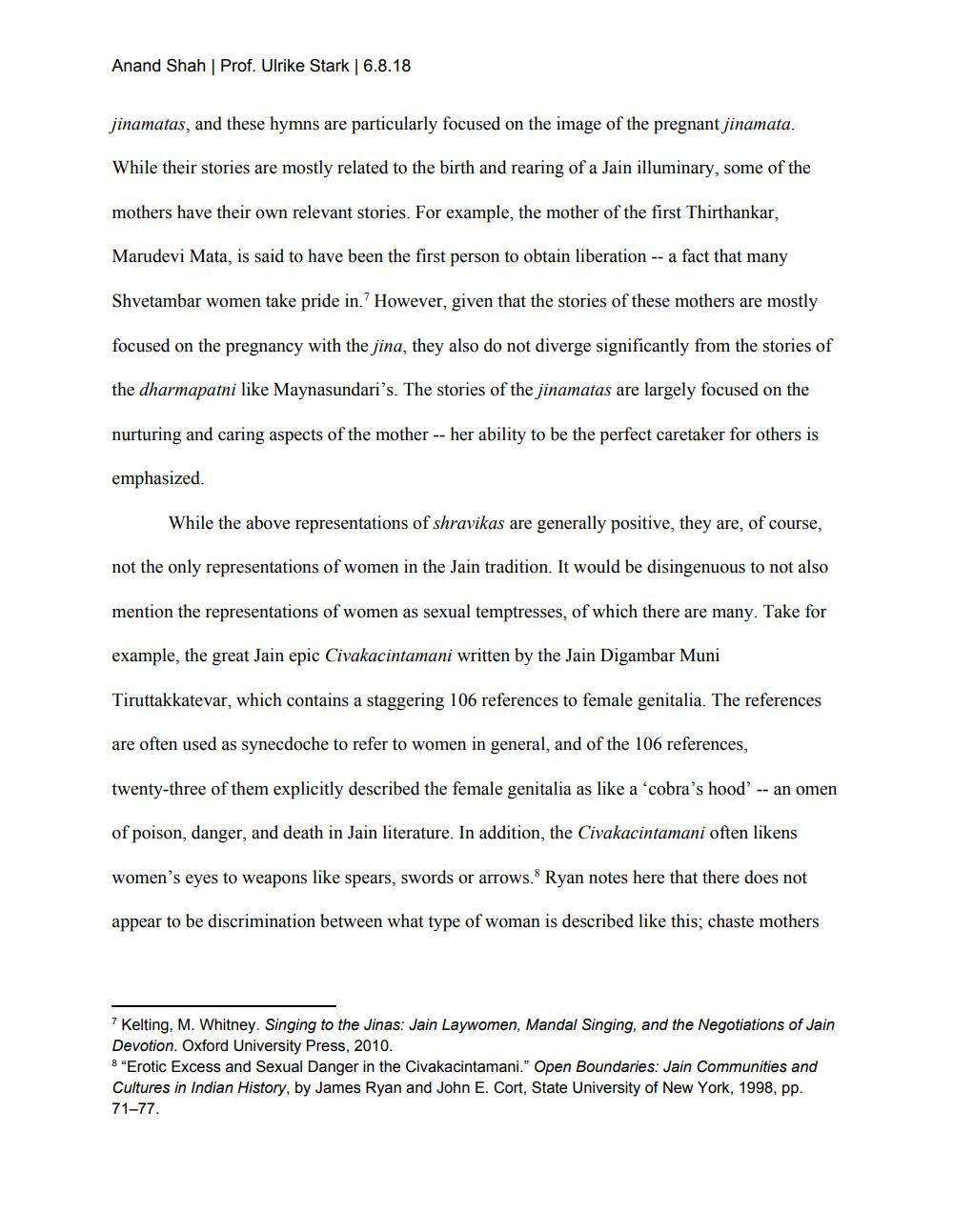Book Title: Jainism Parity And Patriarchy Author(s): Anand Shah Publisher: Anand Shah View full book textPage 6
________________ Anand Shah | Prof. Ulrike Stark 6.8.18 jinamatas, and these hymns are particularly focused on the image of the pregnant jinamata. While their stories are mostly related to the birth and rearing of a Jain illuminary, some of the mothers have their own relevant stories. For example, the mother of the first Thirthankar, Marudevi Mata, is said to have been the first person to obtain liberation -- a fact that many Shvetambar women take pride in. However, given that the stories of these mothers are mostly focused on the pregnancy with the jina, they also do not diverge significantly from the stories of the dharmapatni like Maynasundari's. The stories of the jinamatas are largely focused on the nurturing and caring aspects of the mother -- her ability to be the perfect caretaker for others is emphasized. While the above representations of shravikas are generally positive, they are, of course, not the only representations of women in the Jain tradition. It would be disingenuous to not also mention the representations of women as sexual temptresses, of which there are many. Take for example, the great Jain epic Civakacintamani written by the Jain Digambar Muni Tiruttakkatevar, which contains a staggering 106 references to female genitalia. The references are often used as synecdoche to refer to women in general, and of the 106 references, twenty-three of them explicitly described the female genitalia as like a 'cobra's hood' -- an omen of poison, danger, and death in Jain literature. In addition, the Civakacintamani often likens women's eyes to weapons like spears, swords or arrows. Ryan notes here that there does not appear to be discrimination between what type of woman is described like this, chaste mothers Kelting, M. Whitney. Singing to the Jinas: Jain Laywomen, Mandal Singing, and the Negotiations of Jain Devotion. Oxford University Press, 2010. 8 "Erotic Excess and Sexual Danger in the Civakacintamani." Open Boundaries: Jain Communities and Cultures in Indian History, by James Ryan and John E. Cort, State University of New York, 1998, pp. 71-77.Page Navigation
1 ... 4 5 6 7 8 9 10 11 12 13 14 15 16 17 18
